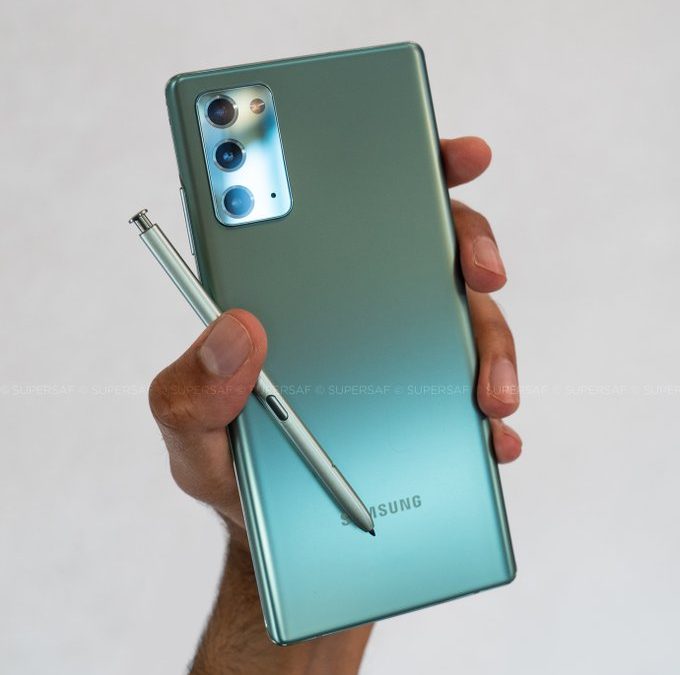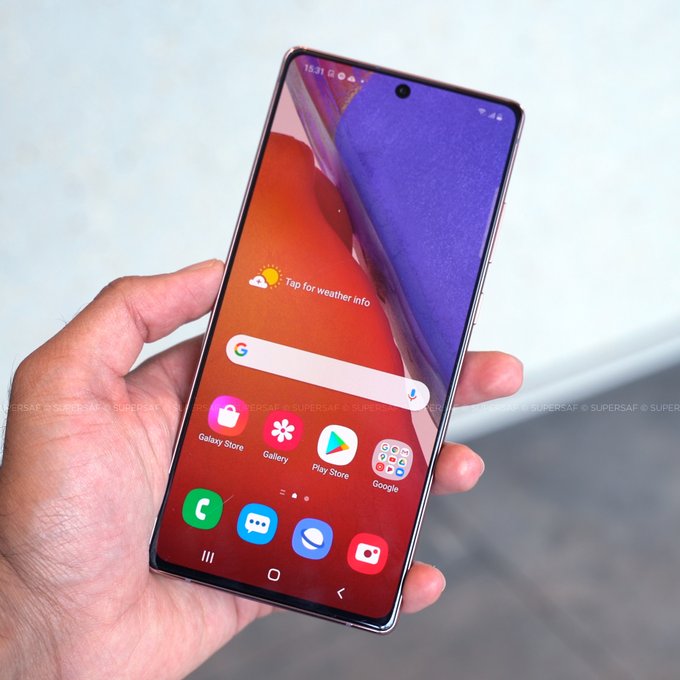Following the usual hype by fans, critics and rivals alike, Samsung has once again swooped in with its yearly iteration, the Galaxy Note 20. This year the new and upcoming flagship, which boasts its signature S-Pen stylus, the large screen size (more on that later), and premium pricing (rant begins here). For $999 (USD), you’re getting a tri-camera setup, 4300 mAh battery, and…a measly 60 Hz screen and a simple plastic back cover.
The Cons, And The Pros:
If the latter part sounds disappointing, then you’re among the millions who are left wondering how the most premium Android-carrying flagship smartphone has a very average refresh rate. Though serviceable, 60 Hz has been the bare minimum for years, and almost every other self-respecting flagship has adopted 90 or even 120 Hz displays. Add in the fact that a glass or metal panel could have just as easily been used instead of cheap plastic, and suddenly value-for-money goes out the window.
The Galaxy Note 20 isn’t a bad phone by any means, to be fair. It packs just enough high-spec features that we’re meant to forget about the ones that are missing. It comes with up to 8 GB RAM and 256 GB internal storage.

There’s a 6.7 inch, slim-bezzled Full HD non-curved display, with IPS68 water resistance. There’s the 12MP f/1.8 main, 64MP telephoto, and 12MP ultra-wide cameras that are all quite good. They have decent color, saturation, and contrast, with the 30x zoom being a standout feature. And there’s the 10MP punch-hole selfie camera, to complement whatever aesthetic they’re trying to implement.
Samsung needs to start giving the consumer what they deserve
Here’s the main issue with tactics like these. In most cases, the goal of the manufacturer is to maximize as much of the profit the consumer provides. At the same time, they want to spend as little as possible on actually delivering on the promised features past the bare minimum. Proven yet unethical practices like premature obsolescence are proof that Samsung and others will do whatever it takes to lure in potential buyers.
Also read: Google Pixel 4a vs. iPhone SE – Which phone is the real budget king?
They use flashy (read: overkill) specs while sneakily reducing/removing or omitting expected features. Look at the absence of a higher refresh rate, the inexcusably cheap plastic body here. And the fact that the separate Galaxy Note 20 Ultra has better superior specs for the money. It all means that you just aren’t getting what you’re paying for. Your money ensures that every year brands like Samsung will get increasingly lazier.

Verdict
The lack of ambition and priority given to the Galaxy Note 20 is apparent when the phone is compared to its higher-spec sibling, the Note 20 Ultra. Unlike the former, Note 20 Ultra is the phone that Samsung clearly wants to put effort into. It gets a 120 Hz refresh rate, a 108 MP main camera, faster charging (45W rather than the other’s 25W).
And don’t forget the suite of higher specs in the internals and the finish of the build. The standard Note 20 simply exists to drive the positive qualities of the Note 20 Ultra higher up in appeal. But it fails to compete with other leading brands like Sony and Xiaomi. Almost all of which cost significantly less. If you’re still adamant on a large phone with the trademark S-Pen, go for the pricey Galaxy Note 20 Ultra. At $1299 it’s still somehow less of a ripoff.


